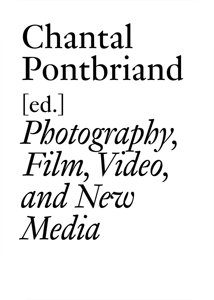In 1975, a small group of enterprising, discontented members of the international art community in the Canadian province of Quebec posed the following question: "What do we know of contemporary art outside of Quebec, in Canada or abroad? Do we even know what contemporary art exists in Montreal? How does information about art circulate?" By way of an answer, the artistically unconventional and theoretically cutting-edge magazine "Parachute" was launched, founded by
Chantal Pontbriand and France Morin.
Artists such as
Jeff Wall,
Bill Viola,
Stan Douglas, Eija-Liisa Ahtila, and many others, had the first significant critical reception of their work in "Parachute." Similarly, figures such as Douglas Crimp,
Thomas Crow,
Thierry de Duve,
Georges Didi-Huberman, Hal Foster, Reesa Greenberg, Serge Guilbaut, and
Laura Mulvey, all of whom have helped define the parameters of art history, theory, and practice, published rigorous, highly pertinent essays in the journal early on in their careers.
After the two volumes entitled "
Museums, Art History, and Theory" and "
Performance & Performativity," the essays collected in this book focus on photography, film, video, and new media. These contemporary genres par excellence were discussed in some of the earliest volumes of Parachute. Photography received particular attention in the early 1980s, film and video later in that decade and through the beginning of the 1990s. The authors question the ontological status of photographic and moving images in relation to the other arts, their exhibition, as well as their genealogy. Discussing what were then still relatively new and overlooked artistic fields, these texts are particularly useful as signposts to how these new media and works were approached.
The essays discuss works by artists such as Eija-Liisa Ahtila, James Coleman,
Nan Goldin,
Bill Viola, and
Rodney Graham. The texts by
Georges Didi-Huberman, Douglas Crimp, and
Laura Mulvey, written in the early 1980s, are among their most seminal.



